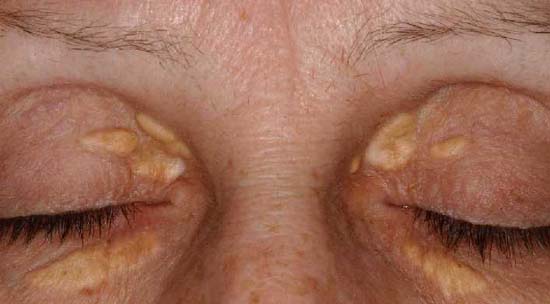Xanthelasmata, arcus corneae, and ischaemic vascular disease and death in general population: prospective cohort study
Abstract
Objective To test the hypothesis that xanthelasmata and arcus corneae, individually and combined, predict risk of ischaemic vascular disease and death in the general population.
Design Prospective population based cohort study.
Setting The Copenhagen City Heart Study.
Participants 12 745 people aged 20-93 years free of ischaemic vascular disease at baseline and followed from 1976-8 until May 2009 with 100% complete follow-up.
Main outcome measures Hazard ratios for myocardial infarction, ischaemic heart disease, ischaemic stroke, ischaemic cerebrovascular disease, and death; odds ratios for severe atherosclerosis.
Results 563 (4.4%) of participants had xanthelasmata and 3159 (24.8%) had arcus corneae at baseline. During 33 years’ follow-up (mean 22 years), 1872 developed myocardial infarction, 3699 developed ischaemic heart disease, 1498 developed ischaemic stroke, 1815 developed ischaemic cerebrovascular disease, and 8507 died. Multifactorially adjusted hazard/odds ratios for people with versus those without xanthelasmata were 1.48 (95% confidence interval 1.23 to 1.79) for myocardial infarction, 1.39 (1.20 to 1.60) for ischaemic heart disease, 0.94 (0.73 to 1.21) for ischaemic stroke, 0.91 (0.72 to 1.15) for ischaemic cerebrovascular disease, 1.69 (1.03 to 2.79) for severe atherosclerosis, and 1.14 (1.04 to 1.26) for death. The corresponding hazard/odds ratios for people with versus those without arcus corneae were non-significant. In people with versus those without both xanthelasmata and arcus corneae, hazard/odds ratios were 1.47 (1.09 to 1.99) for myocardial infarction, 1.56 (1.25 to 1.94) for ischaemic heart disease, 0.87 (0.57 to 1.31) for ischaemic stroke, 0.86 (0.58 to 1.26) for ischaemic cerebrovascular disease, 2.75 (0.75 to 10.1) for severe atherosclerosis, and 1.09 (0.93 to 1.28) for death. In all age groups in both women and men, absolute 10 year risk of myocardial infarction, ischaemic heart disease, and death increased in the presence of xanthelasmata. The highest absolute 10 year risks of ischaemic heart disease of 53% and 41% were found in men aged 70-79 years with and without xanthelasmata. Corresponding values in women were 35% and 27%.
Conclusion Xanthelasmata predict risk of myocardial infarction, ischaemic heart disease, severe atherosclerosis, and death in the general population, independently of well known cardiovascular risk factors, including plasma cholesterol and triglyceride concentrations. In contrast, arcus corneae is not an important independent predictor of risk.
http://www.bmj.com/content/343/bmj.d5497
Xanthelasma黄色瘤
Xanthelasma (or xanthelasma palpebrarum) is a sharply demarcated yellowish collection of cholesterol underneath the skin, usually on or around the eyelids. Although not harmful or painful, these minor growths may be disfiguring and can be removed. The plural is "xanthelasmata". They are common in people of Asian origin and those from the Mediterranean region. Xanthelasmata can be removed with trichloroacetic acid peel, surgery, lasers or cryotherapy. Removal can cause scarring and pigment changes, but it is unusual after treatment with trichloroacetic acid. Because of the hereditary component, they may or may not indicate high blood levels of cholesterol. Where there is no family history of xanthelasmata they usually indicate high cholesterol and may correlate with a risk of atheromatous disease (cholesterol building up in arteries). The root of the word is from Greek xanthos,"yellow".

